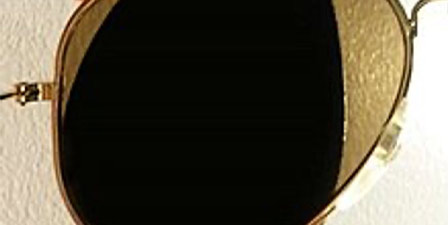By Mark Mattison-Shupnick
Blue light is part of the visible spectrum, the wavelengths perceived as the colors violet-blue to light blue or the wavelengths from about 380 to about 500 nm (Fig. 2). There are three important blue light concerns: 1. Violet and blue are the shortest, highest energy visible wavelengths and are scattered easily creating haze that can reduce contrast and affect the sharpness and clarity of what you see. 2. High-energy blue light can cause retinal damage and finally, 3. Many of the newest electronic devices emit significant blue light. Absorbing the "blue" or high-energy visible wavelengths can improve the clarity of what's seen and add protection as well. Here's the technology behind the effects.
Light scattering haze is wavelength selective, i.e., the shorter blue wavelengths are scattered more than the longer red wavelengths, which are scattered less. This kind of scattering affects visual contrast and is a key component of acuity at distance and near. For example, a brown bird against a blue sky (higher contrast) is easier to follow than that same bird against a pile of fall leaves where all the colors seem the same. A lack of contrast makes objects much more difficult to identify.
 |
The short wavelengths are easily scattered (bent in all directions) both by the atmosphere and in the human eye. For example, when the particles in the atmosphere (dust, moisture) are smaller than the blue light waves, Rayleigh's Effect scatters the blue light. A blue sky or a blue ocean is an effect of the shorter blue wavelengths being scattered more than the other colors. A large pupil or opacities in the fluid of the eyes can also create glare that produces "hazier" vision, a decrease in the quality of vision. This results in a loss of contrast, and any presence of blue light adds to scatter and the formation of glare. The result can contribute to eyestrain and asthenopia (eye fatigue).
 |
High-energy visible (or HEV blue light), while the shortest of the visible light wavelengths, possess the highest energy. These wavelengths have been shown to cause photochemical injury to the retina. The Beaver Dam Eye Study showed that those who had high levels of sun exposure during their teenage years and throughout their 30s had an increased risk of developing the early changes that result in age-related macular degeneration (AMD).
Protective antioxidant pigments in the macula are lost as we age, possibly allowing for greater injury from oxygen free radicals produced. HEV, when accumulated over a lifetime, has been demonstrated as powerful enough to injure human cells, mainly through the production of oxygen free radicals (source: 20/20 CE course "From Correction to Prevention"). This is called the blue light hazard and the International Standards Organization (ISO) has described a hazard function for the retina (Fig. 3) showing the wavelengths that are most concerning. These wavelengths have been implicated in photo retinopathy and AMD.
Blue light emitting electronics today can add to the scatter of images seen as well as be evaluated using the ISO standard. Look at the two graphs (Fig. 4). Each depicts the emissions by color and wavelength of a variety of displays, from a standard computer monitor to popular tablet screens (source: Nikon). In each case, any higher blue light radiance will contribute to various levels of glare depending on pupil size, distance from the eye and scatter internally in the eye.
 |
GOT THE BLUES?
The question is what can be done about the blue light from the LEDs, tablets and the sun to which we're exposed every day? Sun lenses always reduce the blue wavelengths, especially when the filter (lens) color is amber, brown and green or are the newer lens products that are formulated especially to absorb HEV/blue light. However, these lenses all require significant tint or polarization to absorb the HEV blue. That makes the lenses perfect for outdoors during the day.
Indoors in low light and at night, clear lenses are required. But there hasn't been a product that addresses all the effects of blue light without significant absorption (a noticeable tint color like yellow). And AR has been formulated to pass all wavelengths to ensure the highest lens clarity. This includes ultra-violet (UV) so photochromics work their best. There are unmet needs to improve the clarity of what you see, reduce the scatter when using electronics and reduce the blue wavelengths reaching the eye.












